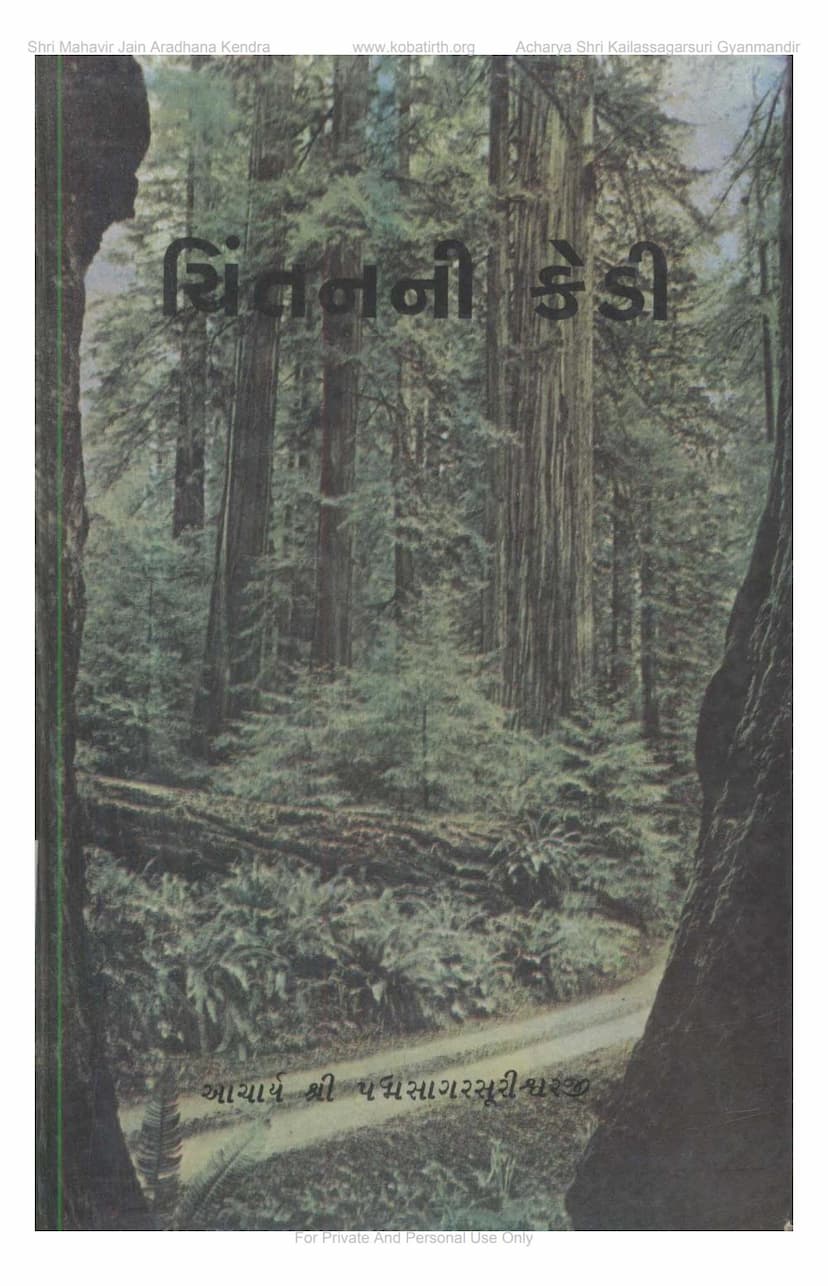Chintanni Kedi
Added to library: September 1, 2025
Loading image...

Summary
This document is the Gujarati book "Chintanni Kedi" (A Path of Contemplation) by Acharya Shri Padmasagarsurishwarji, published by Arunoday Foundation. It contains a collection of his insightful discourses, presented as a series of short, thought-provoking pieces, each starting with a common object or concept and drawing spiritual lessons from it.
Key aspects of the book:
- Author: Acharya Shri Padmasagarsurishwarji, a highly respected and eloquent Jain scholar and preacher.
- Publisher: Arunoday Foundation.
- Theme: The book aims to guide readers on a spiritual path through contemplation, using everyday analogies to explain profound Jain philosophical concepts.
- Content: It features a table of contents listing various topics (numbered 1 to 72, with some duplicates and re-numbering), each explained through a short allegorical narrative or reflection. These topics are presented as "Chintaniyo Pushpo" (thought-provoking flowers).
- Philosophy: The core message emphasizes the pursuit of inner peace, spiritual growth, and liberation (moksha) by understanding the true nature of the soul and detaching from worldly attachments and desires. It highlights the importance of right knowledge, right faith, and right conduct as taught in Jainism.
- Style: The language is simple, accessible, and poetic, making complex spiritual ideas easy to grasp for a wide audience.
- Purpose: The book serves as a guide for spiritual seekers, aiming to provide solace, inspiration, and practical wisdom for navigating life's challenges and achieving spiritual fulfillment. It is presented as a "cool shade" for those suffering in the "forest of worldly existence."
Some of the topics covered and their metaphorical interpretations include:
- Passport: Represents the spiritual qualification and intention needed for the journey of liberation.
- Water: Illustrates the soul's true nature as formless and pure, unaffected by external qualities, akin to water taking the shape of its container.
- Lighthouse: Symbolizes the role of gurus and spiritual guides who illuminate the path and warn of dangers in the ocean of existence.
- Ticket: Represents adherence to religious principles and duties, without which one cannot embark on the journey of spiritual progress.
- Train: Analogizes life's journey, with the need for a guide (guard) and proper direction.
- Machine: Highlights the importance of a well-functioning mind and soul, where even a small defect can hinder progress.
- Master Key: Symbolizes the wisdom and guidance provided by spiritual masters to unlock the true self.
- Factory: Compares the human body to a factory where spiritual products should be manufactured.
- Target: Emphasizes the need for a clear spiritual goal and focused effort.
- Drip (Boond): Suggests the power of consistent effort, like small drops forming an ocean.
- Eyes: Discusses how our perspective (colored by attachments and desires) shapes our experience of the world.
- Sea: Contrasts the giving nature of rivers with the hoarding nature of the sea, relating it to the importance of detachment and giving.
- Fruit: Differentiates between the effort required to pluck unripe fruit and the natural falling of ripe fruit, paralleling the results of actions done with attachment versus detachment.
- Ant: A small example of diligence and continuous effort.
- Fly and Dog: Used to illustrate pride and the illusion of control over worldly affairs.
- Brick: Represents the purified and disciplined self, capable of building a spiritual edifice.
- Sand: Illustrates the scattered nature of individual efforts, emphasizing the power of unity and focus.
- Humanity: Presented as the fundamental truth underlying all religious labels.
The book is a rich resource for anyone seeking to understand Jain philosophy and integrate spiritual principles into their daily life. It emphasizes self-reflection, detachment, and the ultimate goal of soul liberation.